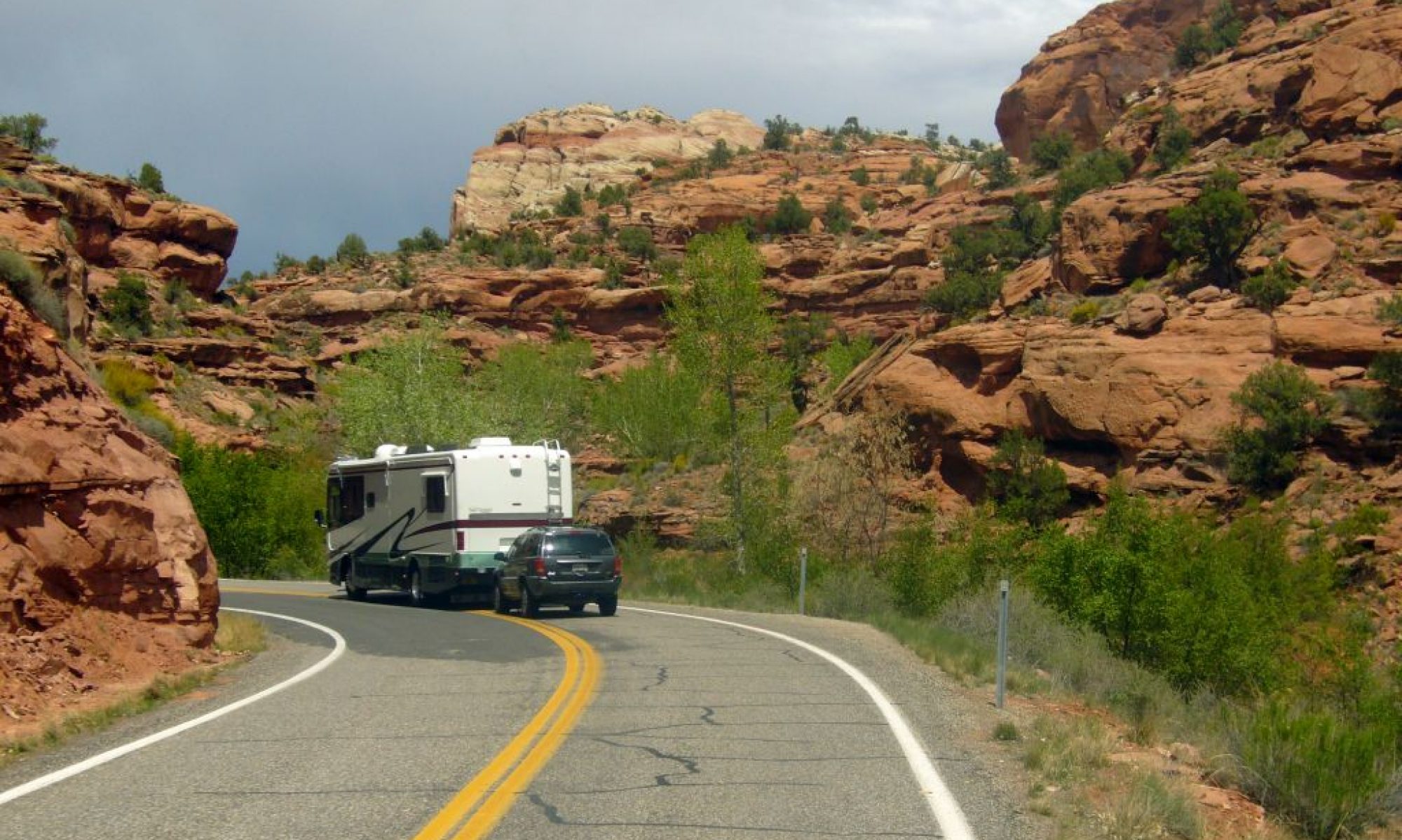If your RV will be stored for any length of time where the ambient temperature will be below freezing, winterizing will be necessary. This is to avoid water in pipes, tanks and drains from freezing, resulting in bursts and leaks.
The hot water tank should be drained using the drain valve located near the bottom of the tank.
If the hot water tank has a bypass valve, turn it to the bypass position and leave it there until Spring. Your hot water system may have more than one valve, and you need to correctly identify the bypass valve.
Empty the shower hose, if it’s a ‘telephone’ style (flexible hose).
Circulate ‘pink’ RV antifreeze through the fresh water system by adding it to your fresh water tank and opening each faucet in turn until you see the pink color come out. An alternative is to hook a short section of water hose to your ‘city water’ connection, put the other end in a bottle of ‘pink’ RV antifreeze, and turn on the water pump; Open each faucet in turn until you see the pink color come out.
Flush the toilet until you see the pink color. Leave a little RV antifreeze in the toilet bowl to keep the seal moist.
Pour some RV antifreeze down the sinks and the shower so it can sit in the traps. Don’t forget the outside shower.
If your RV has a washing machine, run a spin cycle to remove any residual water and follow with a rinse cycle to draw in some antifreeze. Be sure to leave some antifreeze in the bottom of the machine, including the pump.
If you have a dishwasher, check the owners manual for winterizing instructions.
You should not need to add anything to your holding tanks. There is enough expansion room that any small amount of liquid that is left has plenty of room to expand.
If your rig has a refrigerator with an ice maker, the solenoid valve that allows the water to flow into the ice maker must be emptied. Determine the voltage required to activate the solenoid (12V or 110 VAC), disconnect the outlet side of the valve and apply voltage.
Empty the filter of the water pump.
The valve of the toilet is usually made of plastic, and is susceptible to freeze breakage. Make sure it gets emptied as well as the spray hose if your toilet so equipped.
An alternative to running ‘pink’ antifreeze through the water lines is to blow them out with compressed air. Open all faucets and hook up an air line to the fresh water inlet with an adapter. Blow the lines out for several minutes.
If your RV has a ‘black tank rinse’ hookup, blow that and the associated plumbing out to empty any residual water.

